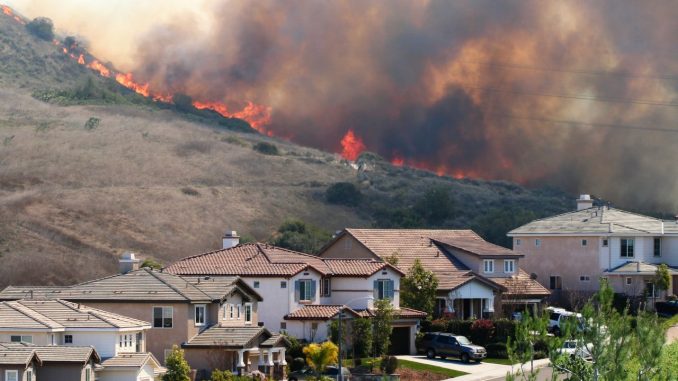
As the world grapples with the increasing severity and frequency of natural disasters, insurance companies are facing a critical challenge: how to adapt their policies to mitigate the impacts of climate change. From rising sea levels and extreme weather events to wildfires and droughts, insurers are realizing that traditional models may no longer suffice in addressing these evolving risks. In this blog post, we will explore how insurers are adjusting their policies to better protect individuals, businesses, and communities from the devastating effects of natural disasters. Join us as we delve into the strategies being implemented by insurance companies in response to climate change – a call for resilience in an ever-changing world.
Stress-testing total exposure against projected climate hazards
In the face of a changing climate, insurance companies are taking proactive measures to evaluate their total exposure to potential climate hazards. This entails conducting rigorous stress tests that simulate various scenarios and assess the financial impact of different climatic events. By analyzing data on past disasters and projecting future trends, insurers can gain valuable insights into the risks they face.
These stress tests aim to quantitatively measure an insurer’s vulnerability to specific climate-related perils such as hurricanes, floods, or wildfires. They consider factors like location, building materials used in construction, and historical weather patterns. By stress-testing their portfolios against these projected hazards, insurers can identify areas of high risk and make informed decisions about coverage limits and pricing strategies.
The goal is not only to protect policyholders from extreme events but also to ensure the long-term sustainability of insurance companies themselves. By understanding their exposure to climate risks through comprehensive stress testing processes, insurers can enhance their overall resilience and establish more accurate risk models.
Furthermore, stress testing allows insurers to identify opportunities for improvement in risk management practices. It highlights areas where additional investments may be needed – such as implementing stronger underwriting guidelines or encouraging preventative measures for policyholders – all with the aim of reducing potential losses caused by natural disasters.
By stress-testing total exposure against projected climate hazards, insurance companies are better equipped to adapt their policies and provide adequate coverage that reflects the evolving risks associated with climate change. Through this proactive approach, they can promote resilience within communities while safeguarding their own financial stability in an uncertain world shaped by environmental challenges.
Building resilience and rebalancing portfolios
Building resilience and rebalancing portfolios is an essential aspect of insurers’ response to climate change. As the frequency and intensity of natural disasters increase, insurance companies are confronted with the need to adapt their strategies in order to protect themselves and their policyholders.
To build resilience, insurers must first assess their current exposure to climate hazards. This involves stress-testing their total exposure against projected risks such as hurricanes, floods, wildfires, and other extreme weather events. By understanding where vulnerabilities lie within their portfolios, insurers can identify areas that require immediate attention.
Once weaknesses are identified, insurers can then take steps to rebalance their portfolios by reducing risk concentrations in high-risk areas. This may involve adjusting coverage limits or pricing policies accordingly. By diversifying geographically and across different types of risks, insurers can spread out the potential impact of natural disasters.
Additionally, building resilience also means investing in innovative technologies and solutions that help organizations mitigate climate-related risks. Insurers can collaborate with technology providers to develop tools for assessing vulnerability and implementing preventive measures at both individual property levels as well as community-wide scales.
Furthermore, building resilience requires a long-term perspective on investment strategies. Insurers have started incorporating environmental factors into decision-making processes when it comes to allocating capital. By considering the potential impacts of climate change on investments, they can better manage risks associated with physical assets like infrastructure or real estate.
In conclusion (not conclusive), building resilience through portfolio rebalancing is crucial for insurers navigating the challenges posed by climate change. It allows them to proactively manage risk exposures while protecting policyholders from increasing threats brought about by natural disasters amplified by global warming.
Helping organizations mitigate climate risk
Helping organizations mitigate climate risk is a crucial aspect of the insurance industry’s response to the impacts of climate change. Insurers are not just adjusting their policies, but also playing an active role in assisting businesses and institutions in preparing for and managing climate-related risks.
One way insurers are helping organizations mitigate climate risk is by providing valuable risk assessment tools. These tools help organizations understand their vulnerability to specific climate hazards such as storms, floods, or wildfires. By assessing their exposure, organizations can develop strategies to reduce their vulnerability and enhance resilience.
Insurers are also offering guidance on implementing proactive measures to minimize climate-related risks. This includes recommendations on building design and construction techniques that can withstand extreme weather events, as well as suggestions for implementing effective emergency response plans.
Furthermore, insurers are collaborating with organizations to develop customized insurance solutions tailored specifically to address climate-related risks. These innovative products provide coverage for damages caused by natural disasters while incentivizing proactive mitigation efforts.
In addition, insurers are working closely with research institutions and experts in climatology to gather data that can inform better risk management practices. By leveraging advanced analytics and modeling techniques, insurers can accurately assess the potential impact of future climate changes on different industries and regions.
Through these initiatives aimed at helping organizations mitigate climate risk effectively, insurers play a vital role in promoting resilience against the adverse effects of global warming. Their expertise coupled with collaborative partnerships creates a powerful force towards building a more sustainable future.